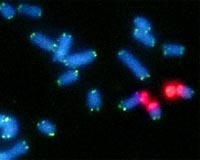 |
Montreal, Canada (SPX) May 23, 2011 Country roadways can be hazardous for moose and men. According to estimates, millions of vehicles collide with moose, elk and caribou in North America and Europe each year. Moose, in particular, venture to roadsides to lick the salt pools that collect following pavement deicing. Because moose are the largest animal in the deer family, with males weighing up to 720 kilograms, their salt cravings can pose significant risks to human and vehicle safety. That's why a group of Canadian researchers has investigated ways to encourage moose away from roads. In a new study, published in the journal Ecological Modelling, lead author Paul D. Grosman reports how the large mammals can adeptly recall the salt pools they visit in previous years. "When the scheduled time came to go to a salt pool, moose moved directly to it with purpose," says Grosman, a graduate student in the Concordia University Department of Geography, Planning and Environment. "Sodium concentration is two or three times higher in roadside salt pools compared to aquatic plants, yet those salt pools increase the probability of moose-vehicle collisions by 80 percent." To avoid moose-man collisions, the best scenario is to completely remove roadside salt pools, Grosman stresses: "If compensation salt pools are used, they should be located as far as possible from the roads - beyond 500 meters." Grosman conducted his investigation with Concordia professors Jochen A.G. Jaeger and Pascale M. Biron, as well as colleagues from the Universite du Quebec a Rimouski and the Ministere des Ressources naturelles et de la Faune du Quebec (Quebec Ministry of Natural Resources and Wildlife). The research team focused on a portion of the Laurentides Wildlife Reserve, situated between Quebec City and Saguenay, which features two provincial highways crossing its territory. Some 47 tagged moose were monitored for three years via global positioning system as they travelled, rested and foraged. A computer-animated control group of 40 moose served as a point of comparison. The research team tested various scenarios, such as removing salt pools altogether or creating compensation salt pools. Although moose could travel as much as 10 kilometers to drink from salt pools, their road crossings could be reduced by as much as 79 per cent when all road-side salt pools were removed. "The most effective management strategy is to remove all salt pools, without creating any compensatory ones, and let moose return to foraging for aquatic plants to satisfy their sodium dietary requirement," says Grosman, noting that other costlier security measures include fencing highways or building wildlife underpasses.
Share This Article With Planet Earth
Related Links Concordia University Darwin Today At TerraDaily.com
 Scientists assemble chromosomes in lab
Scientists assemble chromosomes in labUniversity Park, Pa. (UPI) May 19, 2011 U.S. scientists say they've achieved a major milestone in the attempt to assemble, in a test tube, entire chromosomes from their component parts. Researchers at Penn State University say discovering the process a cell uses to package the basic building blocks of an organism's entire genetic code is expected to help hasten the search for remedies to many human diseases, a university rele ... read more |
|
| The content herein, unless otherwise known to be public domain, are Copyright 1995-2010 - SpaceDaily. AFP and UPI Wire Stories are copyright Agence France-Presse and United Press International. ESA Portal Reports are copyright European Space Agency. All NASA sourced material is public domain. Additional copyrights may apply in whole or part to other bona fide parties. Advertising does not imply endorsement,agreement or approval of any opinions, statements or information provided by SpaceDaily on any Web page published or hosted by SpaceDaily. Privacy Statement |